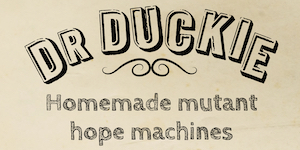New York’s Electronic Arts Intermix (EAI) has been archiving, preserving and exhibiting a huge range of video and multimedia work since 1971. It’s basically like Aladdin’s cave with a remote control.
Personally, I’m partial to a bit of Ryan Trecartin, whose domestic sagas have bits of Jack Smith’s will-to-glamour and John Waters’s fucked-up-family vibes with a very video look. (Trecartin’s 2004 piece A Family Finds Entertainment is pictured above.) EAI were also really cool to us when we were making our documentary This Is Not a Dream; our subjects Dara Birnbaum and Kalup Linzy are in their collection and we even interviewed Dara at their HQ.
Artsy has a nice piece up by EAI executive director Lori Zippay about its active approach to curating and preservation. You can read the whole thing here but I was especially taken with this line:
At EAI, access and preservation are inextricably linked; access is itself a form of preservation.
Basically, use it or lose it. Archives are of pretty limited use if they exist only as repositories for inaccessible artefacts. To be useful to living culture, they must be activated – that is, made available to eyes, ears and minds today. This in turn helps ensure both the ongoing currency of the work in people’s imaginations, and that attention is paid to artworks’ material welfare. This is just as important for digital work, with its rapidly obsolete formats, as for VHS, celluloid or paint.
Of course, performance and especially cabaret shows are a different category of work, ephemeral by nature. But I’ve got loads of archived cabaret material (by which I mean things in drawers and boxes – objects, flyers, pics etc) that are worth circulating so I’ll get some of those up on the blog as and when. Here’s a for instance: the 16-page magazine created with Duckie for David Hoyle’s 2007 run at the RVT called, yes, Magazine.


